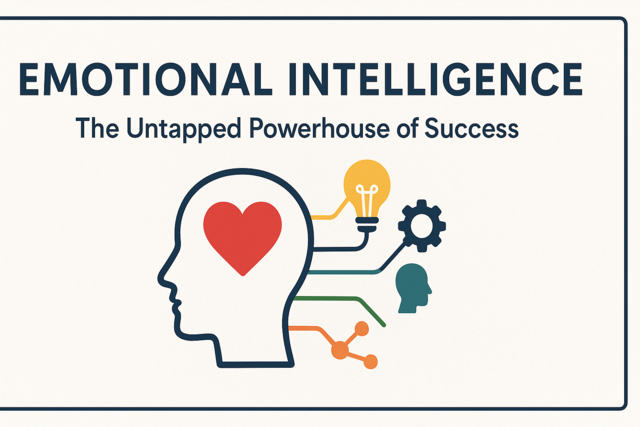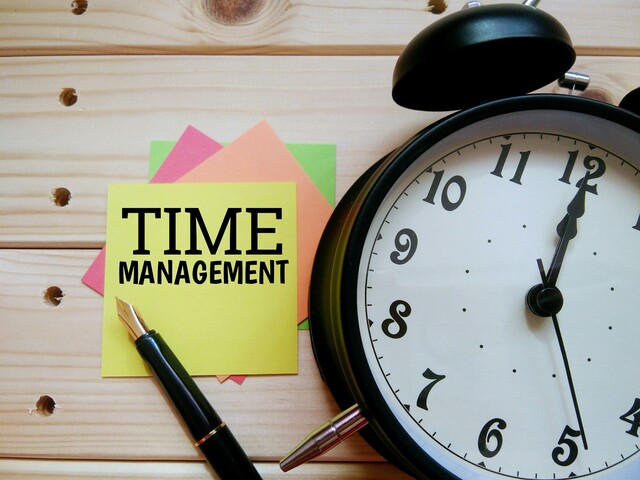Key Definition
1. Customer Expectation Management � This is a method of training that focus on the perceived-value customers are demanding.
2. Outside-in Perspective � It is an approach and/or an activity that aims to focus the organization on what is happening around it.
3. Lean culture � Refer to a culture that facilitates flow of the main work process, and sustainability of the implemented lean management tools and techniques.
4. Accountability � The condition or fact of being responsible.
5. Visual Management � This is a workstation that is self-ordering, self-regulating, self-improving and self-explaining.
Lean principles are mainly applied in operations to eliminate waste, but they can also be applied at managerial level to help the entire organization improve effectiveness and efficiency of its operations.
Traditional organizations are always facing numerous issues such as;
-
Executives are constantly wondering how they should fight complacency as they watch their rivals begin to gain market.
-
Businesses are facing diminishing returns as they try to cut cost. Maybe because a significant portion of their profit is being consumed by affiliate firms from which they have outsourced different services.
-
Asset managers are trying to deal with disappointed customers who are complaining that it has taken long to open account, etc.
In most cases, these problems are rectified by leaning operations. Lean organizations are committed to their customers and work toward minimizing waste by focusing all of their resources towards providing maximum value to their clients. In a lean organization;
-
Investments are warily evaluated and only made when it is crystal clear that long-term financial benefit exists in these projects.
-
Fluffs are eliminated until all that remains are employees and departments that directly affect the final product.
All organizations can be �leaned' provided their mission and vision are clearly defined. In this article, we will wrap things up by discussing a criteria which done right, leads to a lean organization that renews (re-invents) itself.
Step One: Assessment of Work Practices
Transformation can be hard, especially when an organization has been running the same way for many decades. Ideally, start by conducting an honest evaluation of your current work practices and processes to determine the ones that can be eliminated without setback on the value delivered to the end client. For instance, if an organization imports its raw material, it should find out whether a local supplier exists who can provide the same material faster and with no shipping costs. A lean firm depends on completing the journey from raw material to the final product as easily as possible, and without any waste.
Step Two: Eliminate the Fat
Probably the hardest part of leaning or streamlining an organization is cutting the number of employees. Many organizations find it more cost effective to outsource some duties rather than have a department for handling them. For instance;
-
Some firms find it bank friendly to outsource their payroll responsibilities as opposed to having a payroll department.
-
Human resource department can effectively be run by a few employees as long as their skills match the nature of the job.
-
Additionally, middle management can be reduced without any major loss in productivity.
Step Three: Credit the Employees
Employees should be given credit for understanding what they are doing. Generally speaking, rank-and-file workers regularly have a better knowledge of their responsibilities than their supervisors. Management should take advantage of this by allowing workers to contribute in various lean management decisions, for example, during meeting to brainstorm new ideas on how to lean their processes or how to implement lean ideas. The days of a manager or employer acting like a parent who knows all the answers are long gone. Your organizations simply cannot afford to lose the initiative that comes with workers who are allowed to put their authority on their jobs. The more the employees get involved in their jobs, the less the personnel will be needed to complete a task.
Step Four: Revise Operation Method
Organizations should constantly revise their methods of operation. Applying lean management is not an easy process � it involves a lot of steps before the business can become 100% lean. Coming together and developing a plan is the best stating point, but organizations will find out that there are areas that need continuous improvement to operate efficiently. The lean transformation process should be seen as a continuing process rather than a one-time fix.
Pillars of Lean Management
Organizations that renew themselves seek to implement four main management ideologies. However, these pillars are not new concepts to organizations because they use them in one way or another � unconsciously. They don't represent the entire world of good management, they aren't a formula, but when managers design systems or practices founded on these pillars and make sure they are followed at all levels of the firm, every day, they form what proponents of lean management call "an adaptive firm that always produces the maximum possible value to all stakeholders." They are;
1. Deliver value competently to the clients
Organizations must begin by understanding what clients really value and where, why, how and when they value it. Then they must change how they work so as to deliver precisely that value, no less and no more, with the minimum resources possible, eliminate waste, build quality in all processes and improving coordination. The trend of listening and changing cannot stop; as the clients' needs evolve, managers must identify new opportunities to create additional value in their products and services, build competitive advantage, and reduce waste.
2. Enable employees to lead and participate to their fullest potential
Organizations that utilize the most from their workers offer them support systems that help them master their jobs, whether in the boardroom or at the front line. Visual management practices allow people to see what should be done, simple "task helps" reinforce standards, target training build abilities and restored physical space boost collaboration. These as well as other changes allow workers to own their own growth, without having to figure it out by themselves.
3. Discover better ways of doing things
As competitors, customers, society, and economy change, the whole organization must continually think how its current practices of managing and production can be improved. To aid the query, employees must always have a clear sense of what is the best way to achieve the present as well as the future goals. Problem identification and finding solution must be part of every employee's job description, supported by systems to ensure employees are best positioned to execute this duty.
4. Strategy, meaningful purpose, and goals
Lean organizations operate from a clear vision that shows what it's for, and which shapes its objectives and strategy in a way that provide meaning to daily tasks. The manager should articulate objectives and strategy in a way that the employees can easily understand and support them. The last step aligns employee goals to the vision and strategy of the organization � this ensures that the employees understand their functions and why they matter.
The 4 pillars support each other. For instance, to produce new products that provide better value to consumers, management will need to convince workers that their suggestions matter, encourage them to look for new ways to solve customers' issues, and clarify the organization's goal.
The management will need to review and establish what matters to people, assess how work is performed, and ensure that its plan is in line with its mission to help its employees control the flow. Therefore, while a firm's focus might emphasize certain pillars at various times, it will require all four to keep changing itself. Together, they create the lean management system.
5. Essential for Establishing a Lean Culture
A lean culture helps firms to remain on track with the lean process in the long run. Lean culture is vital for sustainability, and to develop it, the firm needs to change its management system. If they stop reviewing lean practices because processes seem in control and stable, it is certain that they will soon experience out-of-control and unstable processes. The culture of lean management is significant to the success of an organization because it extends and sustains the gain from implemented lean processes.
The essential process of creating a lean management system or culture is very simple. But, remember that even straightforward systems need close attention as well as maintenance to run efficiently. Managers should build lean culture on these elements:
1. Make the client everyone's business
Customers are the only reason for a firm to exist. Organizations do not need lean processes if there are no clients to produce or offer services to. Therefore, clients should be every employees' business because their wage is paid by them. Employees should think of ways to contribute toward successful client outcomes that their employers can implement. The process of eradicating useless process is more successful than altering them.
2. Standardize task for managers
Employees are not machines, therefore, it is impossible to level or standardize everything. However, management should have sensitive eyes and ears for what is happening in their organizations. Standard work presents a plainly stated recipe for the manager, making it simpler to review their effectiveness.
3. Have daily accountability
Having short accountability meeting on a daily basis is a fantastic way to concentrate the effort on continuous improvement. In these meetings, managers can review what happened the previous day and what can be done today to make things better. Accountability meeting should not be held to hold long discussions or share information of little relevance. It is okay for clients to join these meetings.
4. Foster discipline
Discipline is required to keep the organization running and transforming.
Hint: Managers can think about lean management processes using a motorbike metaphor. The engine is the standardized work, steering rod and gas throttle is the daily accountability, fuel is the discipline and the driver is the customer.
Outside-in Perspective
The outside-in perspective widens the traditional way of viewing lean, which is quite internally focused on a firm's processes. Outside-in perspective means viewing the organization with a customer's eyes. Therefore, outside-in view aims to improve a firm's internal activities with a client-oriented perspective.
To reap maximum benefits from process improvements, a business must adopt lean management using the outside-in perspective; it should use outside-in techniques to optimize the value the processes produce to clients.
For the outside-in lean perspective to thrive in an organization, it must be supported by the organization culture, top level managers, and all workers. Since both lean and outside-in are specific methods of thinking, helping employees adopt these thoughts is a better way to ensure it succeeds.
Transforming an organization calls for considerable effort. The traditional way and the modern way vary widely, a lean transformation requires managers to re-educate all employees in the firm, beginning with themselves. To educate employees about outside-in mindset, managers should organize and participate in a customer expectation management (CEM) method training.
Purpose, People and Process
Jones and Womack, authors of Lean Thinking: Banish Waste and Create Wealth in Your Corporation, recommended that executives and managers embarking on lean management should think about 3 main business issues that can guide organization wide change. These include:
1. Purpose � What client issues will the organization solve to realize its own objective of prospering?
2. People � How will the firm ensure that all vital processes have people responsible for constant review?
3. Process � How will the firm assess every major value stream to ensure all steps are capable, available, valuable, flexible, adequate, and that the steps are linked by pull, leveling, and flow?






























